Beneath our feet lies a hidden world of tunnels, caves, and chambers that tell stories spanning centuries of human ingenuity and natural geological processes. While surface attractions draw millions of visitors, underground tours offer intimate experiences with fewer crowds and often more fascinating narratives than their above-ground counterparts. These subterranean adventures reveal everything from ancient burial sites to Cold War bunkers and Prohibition-era speakeasies to natural wonders carved by millennia of flowing water.
Most travelers never discover these underground gems because they require more effort to find and book than typical tourist attractions. Here is a list of 19 underground tours that reward curious visitors with unique perspectives on history, geology, and human achievement.
Seattle Underground

Pioneer Square’s buried streets and storefronts from the 1890s create a ghostly timeline of urban development after the Great Seattle Fire. The tour guides visitors through sidewalks and building foundations that became underground when the city raised street levels to solve sewage problems.
Original shop signs and architectural details remain preserved in the underground spaces, creating an authentic glimpse of Victorian-era Seattle that surface renovations have eliminated.
Paris Catacombs
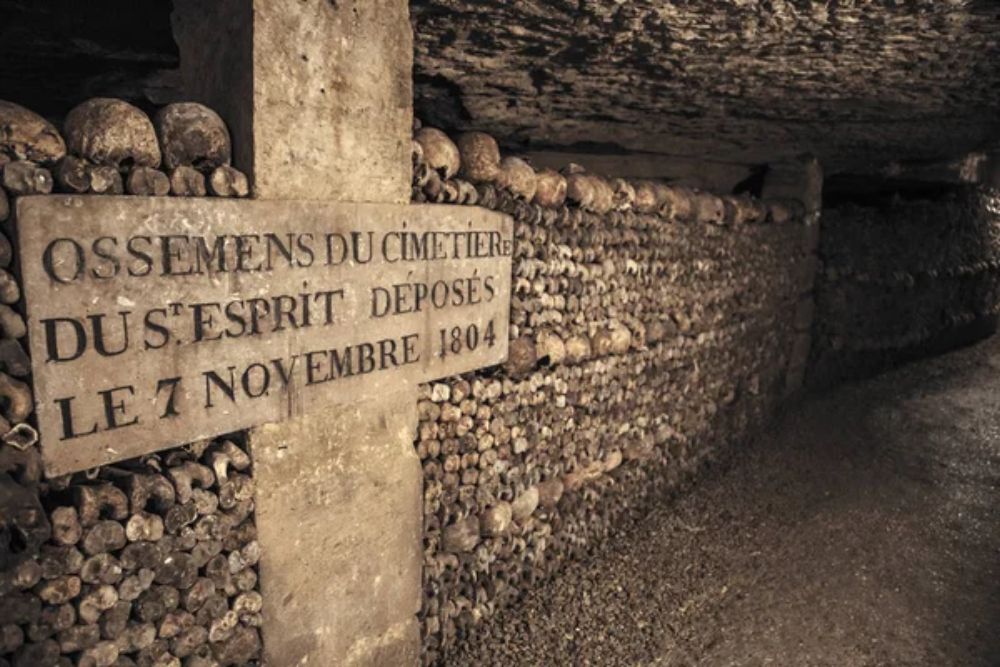
Six million Parisians’ remains create elaborate displays along tunnels that wind beneath the City of Light for over 200 miles. The ossuary began in the late 18th century when overflowing cemeteries threatened public health, leading to the systematic transfer of remains to abandoned limestone quarries.
Artistic arrangements of skulls and femurs form hearts, crosses, and geometric patterns that transform mortality into macabre art installations.
Like Travel Pug’s content? Follow us on MSN.
Edinburgh Vaults

Scotland’s capital city conceals chambers beneath its South Bridge where 18th-century merchants stored goods and the poor established underground communities. Archaeological excavations revealed evidence of taverns, cobblers’ workshops, and even illegal activities that thrived in the forgotten spaces.
The vaults preserved their social hierarchy and economic systems completely separate from street-level Edinburgh society.
Wieliczka Salt Mine
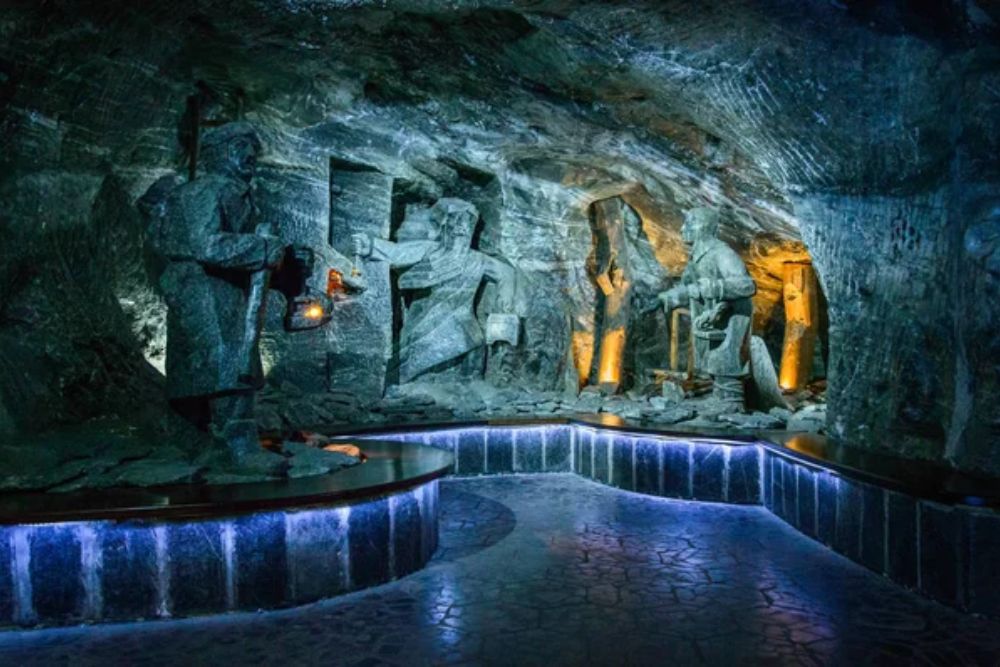
Poland’s 700-year-old salt mine extends 1,073 feet underground through nine levels of tunnels carved entirely from rock salt. Miners created an underground cathedral, complete with chandeliers and religious sculptures, all carved from salt deposits formed millions of years ago.
The constant temperature and humidity levels have preserved wooden mining equipment and created an environment where respiratory patients seek therapeutic benefits from the salt-saturated air.
Mammoth Cave

Kentucky’s limestone cave system extends over 400 miles through passages that showcase every type of cave formation found anywhere in the world. The cave’s constant 54-degree temperature provided natural refrigeration for early settlers while serving as a shelter for Native American communities over 4,000 years ago.
Tour routes range from easy walks to challenging crawls through passages barely wider than human shoulders.
Like Travel Pug’s content? Follow us on MSN.
Underground Atlanta

Georgia’s capital city was built over its original railroad depot, creating tunnels and vaults that preserved Civil War-era Atlanta before Sherman’s march destroyed the surface city. The underground spaces housed everything from storage facilities to nightclubs during various periods of Atlanta’s development.
Guided tours reveal architectural details and urban planning decisions that shaped modern Atlanta’s layout and character.
Derinkuyu Underground City
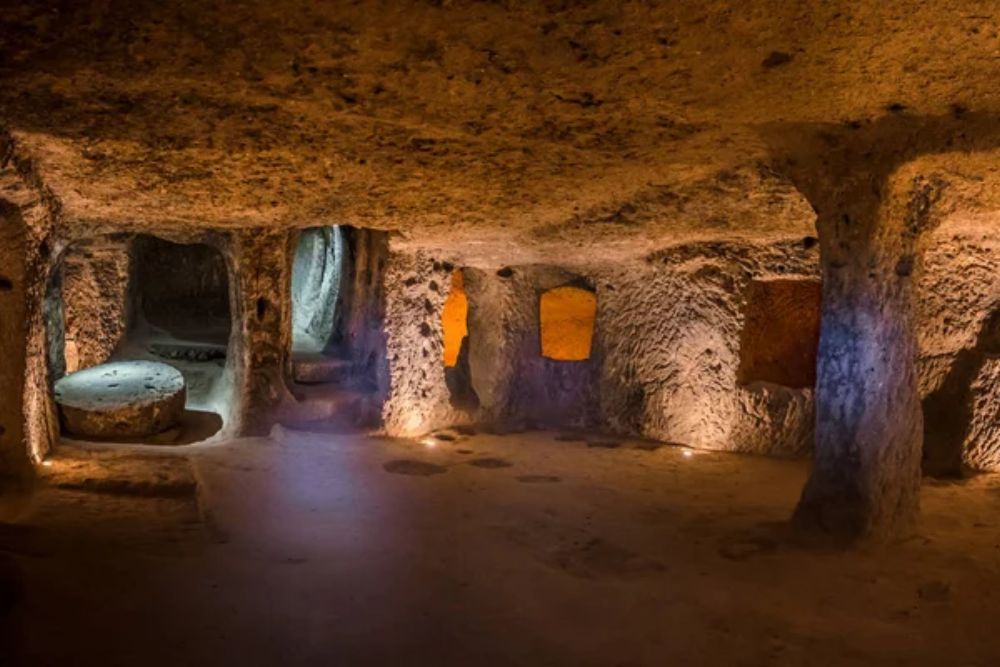
Turkey’s Cappadocia region conceals an eight-level underground city that housed 20,000 people during Byzantine times when Arab raids threatened surface communities. The complex includes churches, stables, wine cellars, and sophisticated ventilation systems that maintain air quality 280 feet below ground.
Rolling stone doors and narrow passages created defensive advantages, while communal areas fostered underground social life.
Thurston Lava Tube
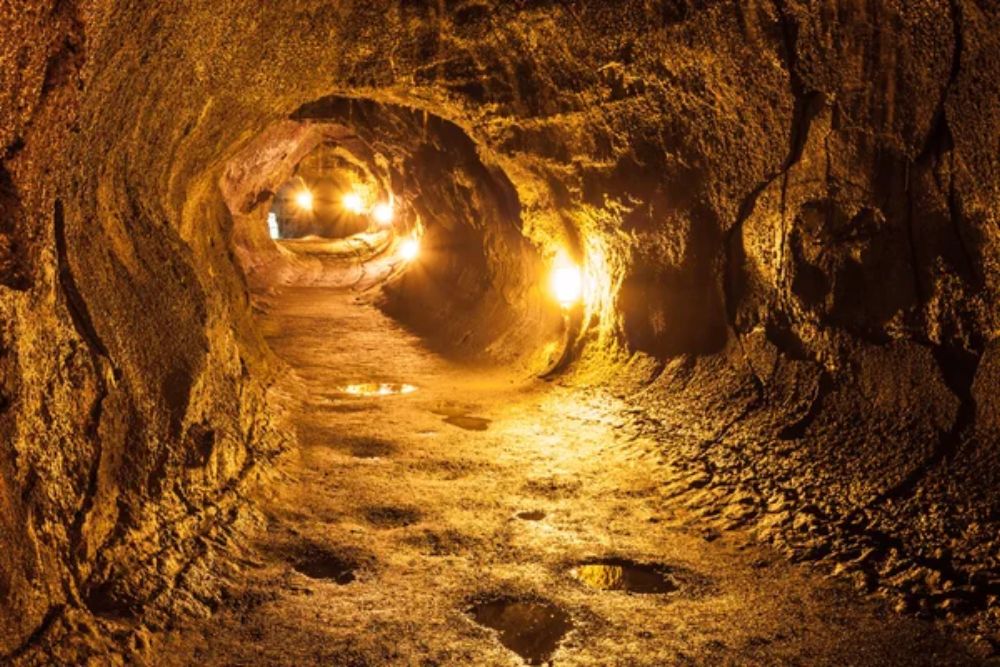
Hawaii’s Kilauea volcano created this 500-year-old tunnel when molten lava flowed through and left behind a perfectly formed tube after the eruption ended. The cave maintains constant temperatures while showcasing different types of volcanic rock formations created during various stages of the lava flow.
Native Hawaiian cultural interpreters explain traditional uses of lava tubes and their significance in Polynesian mythology.
Like Travel Pug’s content? Follow us on MSN.
Crystal Cave
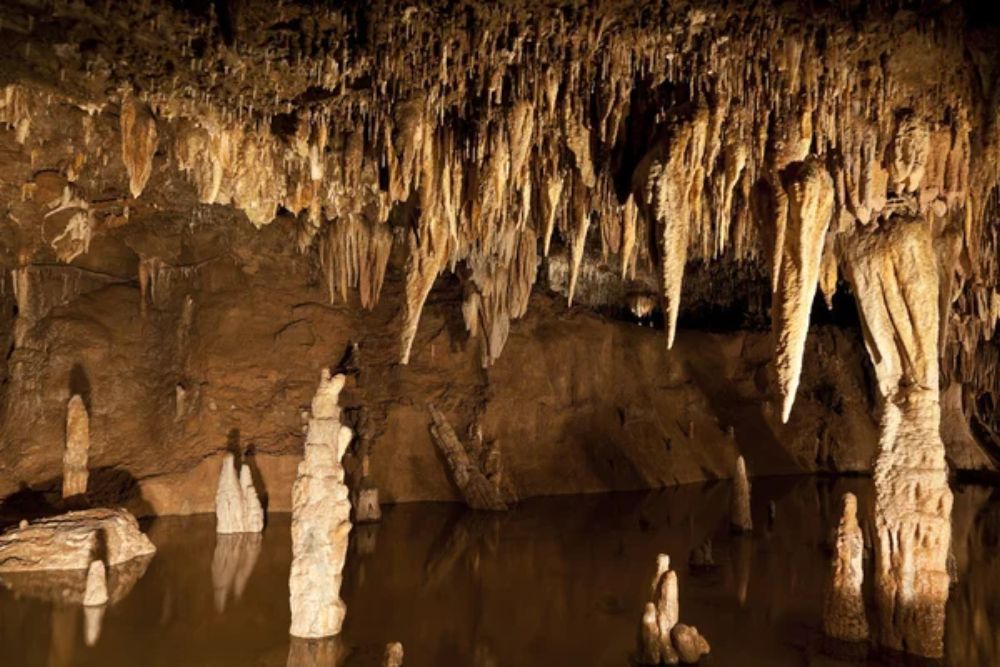
Missouri’s limestone cavern features formations that took millions of years to create through the steady drip of mineral-rich water. The cave maintains perfect preservation conditions that have kept delicate crystal formations intact despite thousands of visitors over decades.
Underground rivers still flow through portions of the cave system, creating the same geological processes that formed the original chambers.
Luray Caverns

Virginia’s Shenandoah Valley cave system includes the world’s largest stalactite organ, which uses cave formations as percussion instruments to create music from limestone stalactites. The cavern’s reflecting pools create mirror images of formations that double the visual impact of the underground landscape.
Constant 54-degree temperatures make this comfortable year-round while preserving formations that began developing 400 million years ago.
Carlsbad Caverns Bat Flight

New Mexico’s national park hosts over 400,000 bats that emerge from the cave entrance each evening in a spiral formation visible for miles. The bat flight program combines underground cave tours with surface viewing of one of nature’s most spectacular wildlife displays.
Underground chambers extend far beyond the main tourist route, with ongoing exploration revealing new passages and formations.
Like Travel Pug’s content? Follow us on MSN.
Ruby Falls

Tennessee’s underground waterfall plunges 145 feet through Lookout Mountain limestone into a cavern 1,120 feet below the surface. The cave discovery in 1928 revealed formations and the waterfall that had remained hidden since the mountain’s geological formation millions of years ago.
Guided tours combine geology education with the dramatic reveal of the illuminated waterfall in the cave’s deepest chamber.
Wind Cave
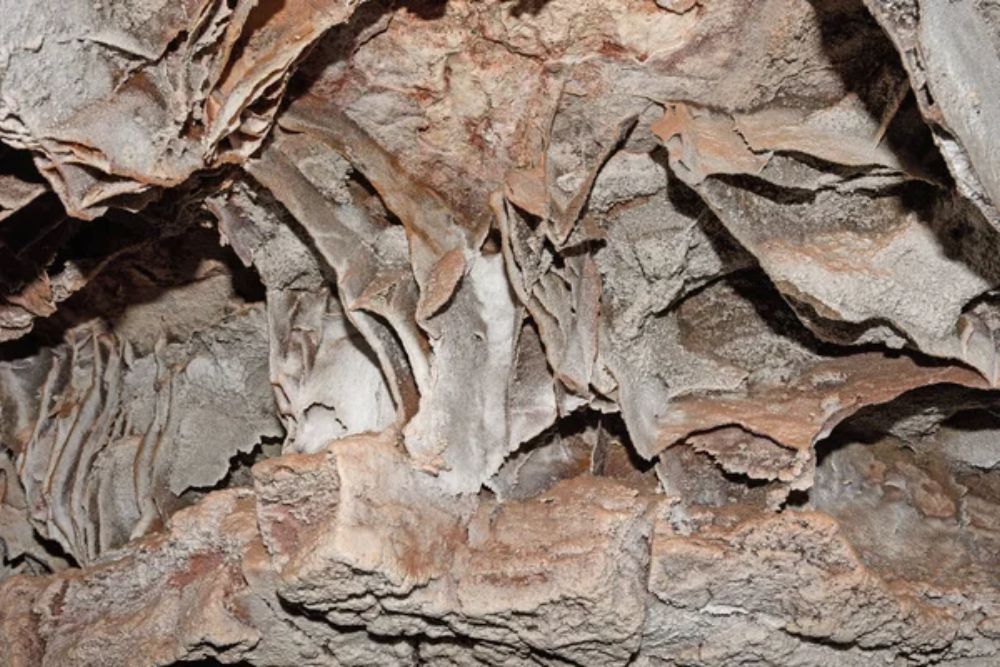
South Dakota’s cave system contains 95% of the world’s known boxwork formations—delicate calcite fins that create honeycomb patterns throughout the cave passages. The cave earned its name from air currents that flow in and out of the entrance as atmospheric pressure changes, creating audible wind sounds.
Native American tribes considered the cave sacred as the place where their ancestors emerged from the underground world.
Oregon Caves

The Pacific Northwest’s ‘Marble Halls of Oregon’ showcase limestone caves carved by underground rivers flowing through solid marble formations. The cave system includes chambers with names like the Ghost Room and Dante’s Inferno that reflect early explorers’ reactions to the dramatic underground landscape.
Above-ground old-growth forests connect to the underground ecosystem through root systems that extend into cave passages.
Like Travel Pug’s content? Follow us on MSN.
Natural Bridge Caverns
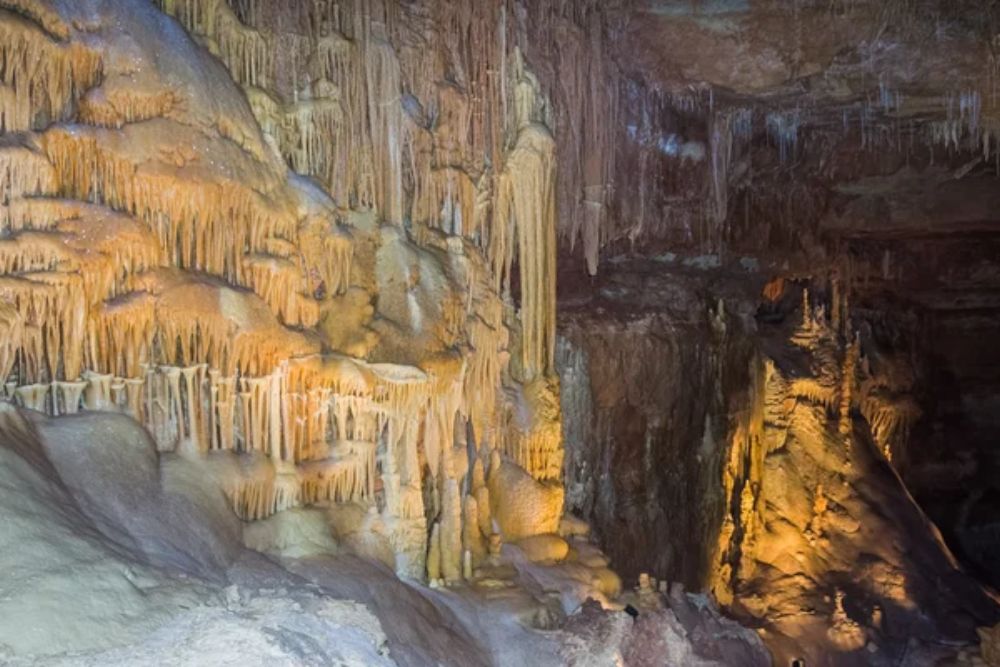
Texas Hill Country’s cave system formed when an underground river was carved through limestone bedrock, creating chambers decorated with every type of cave formation found in North American caves. The cave maintains constant temperatures while preserving formations so delicate that human breath can alter their development over time.
Discovery tours venture into undeveloped sections where visitors crawl through passages using headlamps and protective gear.
Fantastic Caverns
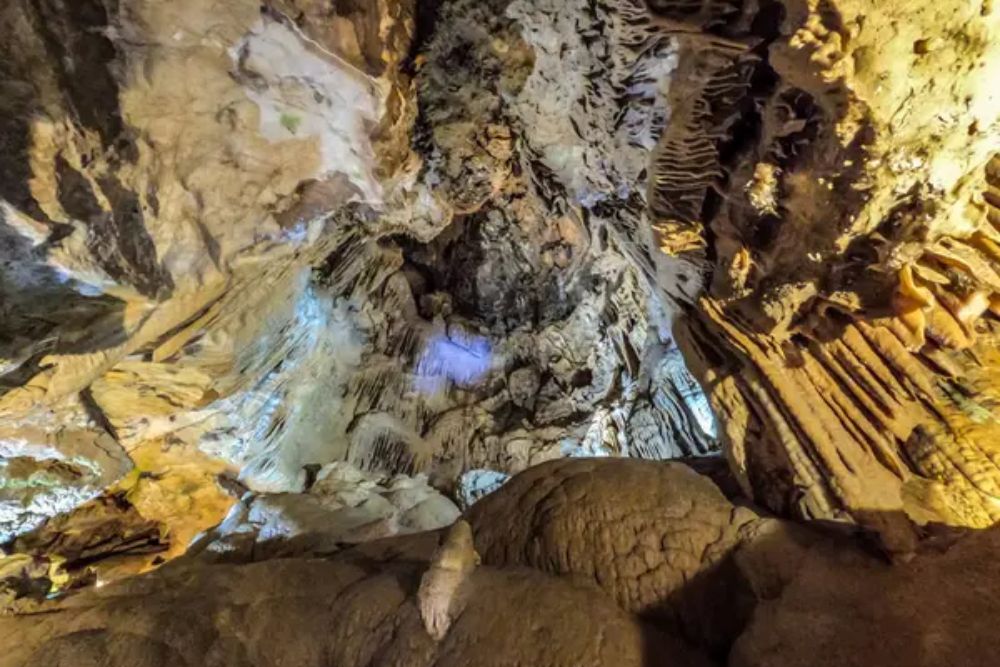
Missouri’s only ride-through cave tour uses Jeep-drawn trailers to navigate underground passages that early moonshiners used during the Prohibition-era for illegal alcohol production. The cave’s constant temperature and humidity created perfect aging conditions for bootleg liquor while providing concealment from federal agents.
Geological formations include rare cave pearls formed by water action over thousands of years.
Blanchard Springs Caverns
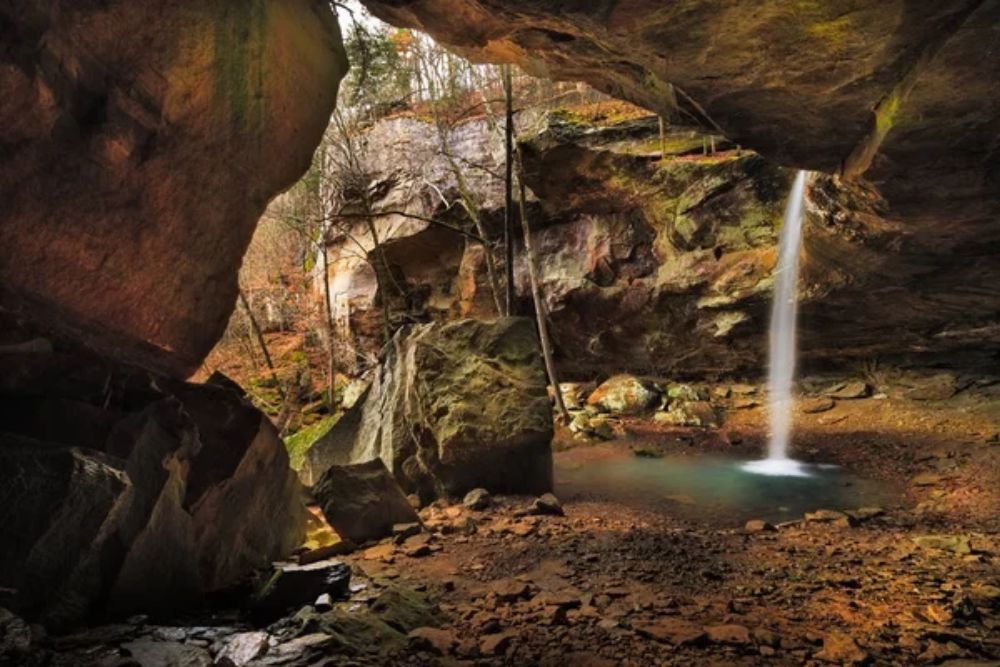
Arkansas’s Ozark Mountains conceal living caves where active water flow continues, creating new formations while visitors explore chambers that opened to the public after extensive scientific study. The cave system includes three levels of tours ranging from easy walks to adventurous explorations through undeveloped passages.
Underground rivers connect to surface springs that provide drinking water for surrounding communities.
Like Travel Pug’s content? Follow us on MSN.
Penn’s Cave
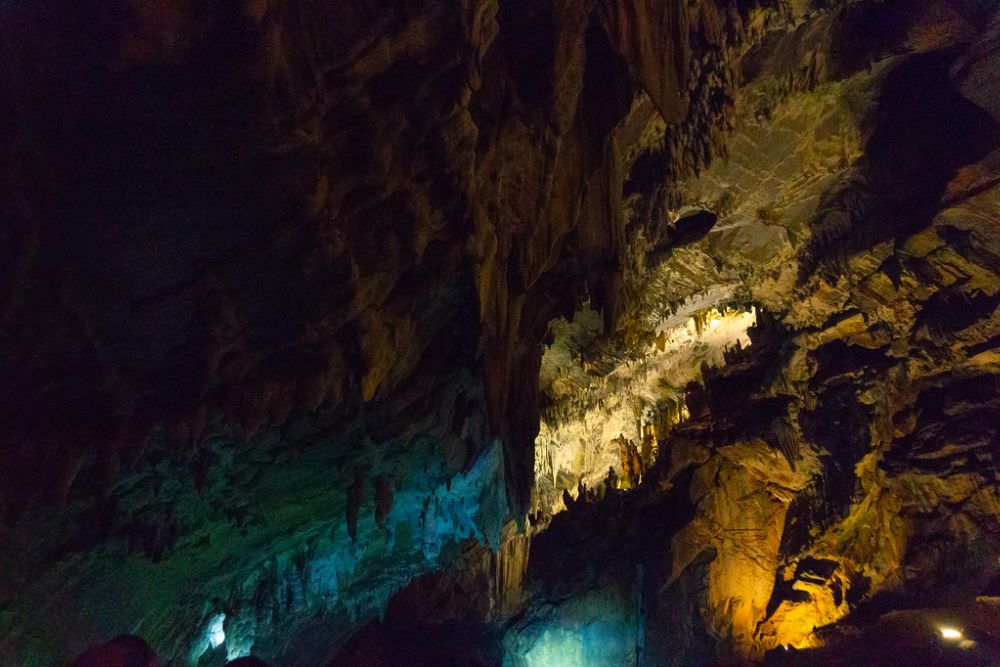
Pennsylvania’s only all-water cave tour uses boats to navigate underground lakes through limestone caverns carved by underground streams over millions of years. The cave system connects to surface lakes while maintaining constant temperatures that preserve Native American artifacts discovered in various chambers.
Boat tours reveal formations reflected in still underground water that doubles the visual impact of cave decorations.
Jewel Cave
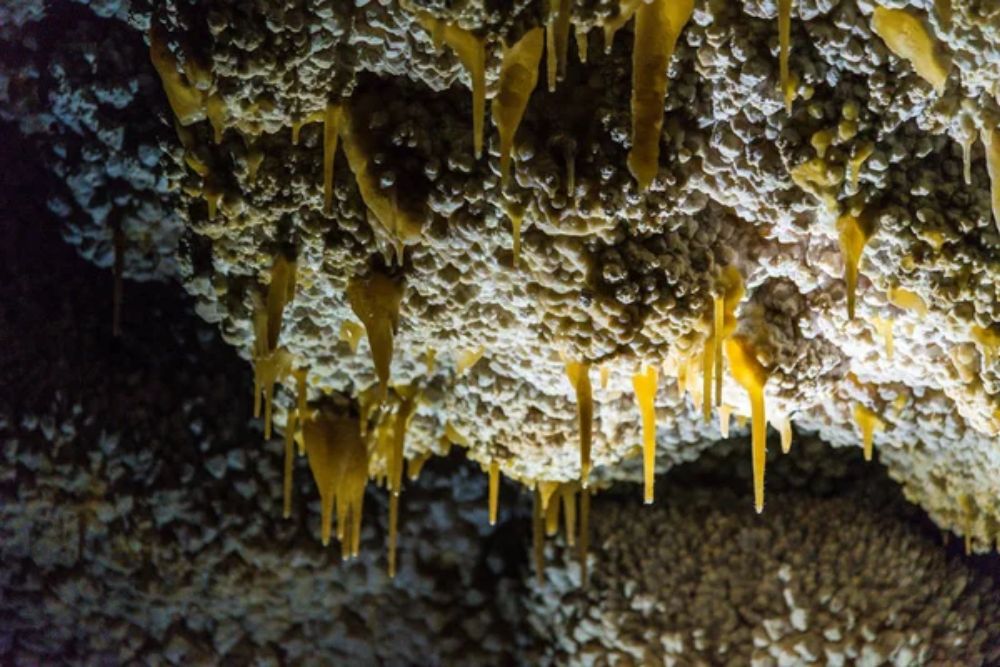
South Dakota’s Black Hills contain the world’s third-longest cave system, with over 200 miles of mapped passages decorated with calcite crystals that give the cave its name. The cave’s narrow passages and complex three-dimensional structure create navigation challenges that make guided tours essential for safety.
Ongoing exploration continues discovering new passages and chambers, suggesting the cave system extends much further than current maps indicate.
Hidden Depths of Discovery
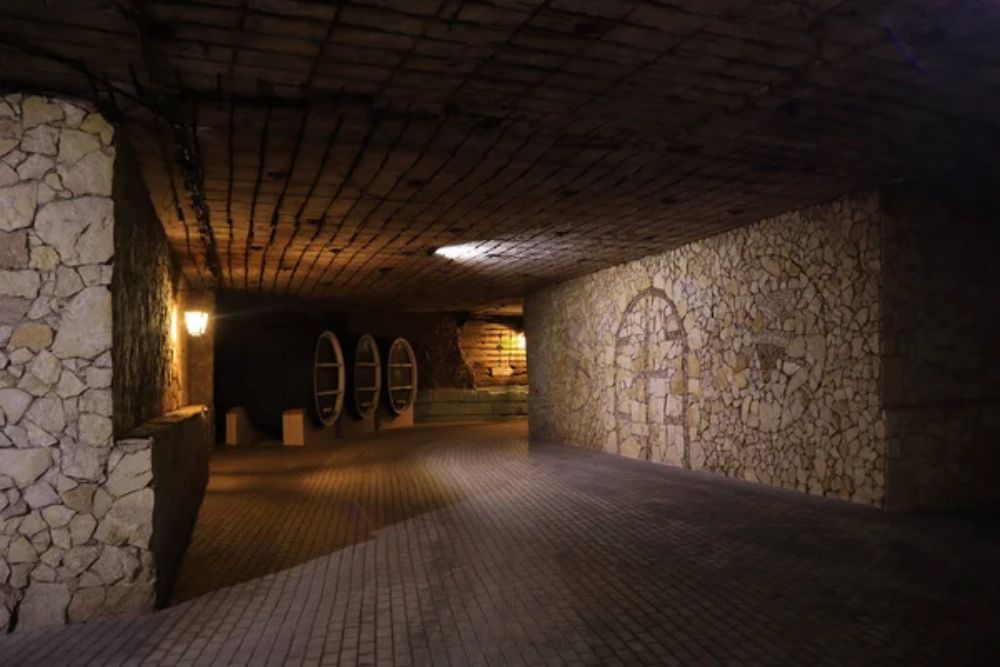
These underground tours reveal layers of history, geology, and human ingenuity that surface attractions simply cannot match, offering intimate experiences that connect visitors directly with processes spanning millions of years to recent decades. Each subterranean adventure provides unique perspectives on how natural forces and human creativity have shaped the hidden world beneath our daily lives.
The most rewarding underground experiences combine education with wonder, leaving visitors with a deeper appreciation for the complex systems that exist just below the surface of familiar landscapes.
More from Travel Pug

- 20 Best Beach Towns in the Carolinas
- 13 Destinations Where Tourists Regularly Regret Their Trip
- 20 Destinations That Are More Magical Without an Itinerary
- 20 Underrated Adventures That Belong on Your Travel List
- 20 Cities Where You Should Just Wing It, No Planning Required
Like Travel Pug’s content? Follow us on MSN.
